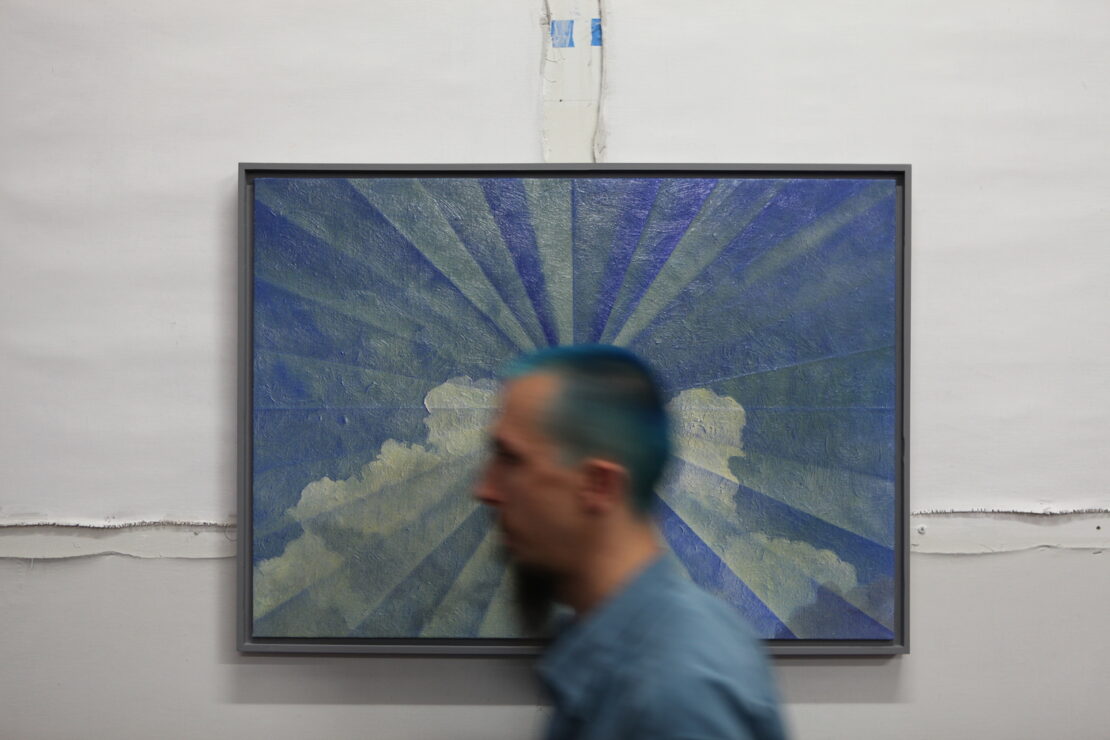Pajtim Osmanaj was raised and educated in Kosovo, and lives and works in New York. His work grapples with discordant elements and reconciles them in ways that can be startling to an American eye. It includes representational elements – feet, hands, and faces – and abstract elements – pure shapes and lines. It also includes elements which are both representational and abstract, such as the semi-random crumpled planes he learned to create from his experiences working construction. These planes stand in for the natural world in his work, resembling, by turns, mountains, fires, atmosphere, and the interior of the Earth.
“Artists make artists! Most of the learning that I can remember comes from hanging out and sharing ideas with my friends/colleagues and is still very important and valuable. It’s rare that art or any other life form exists on its own.”
– Pajtim Osmanaj
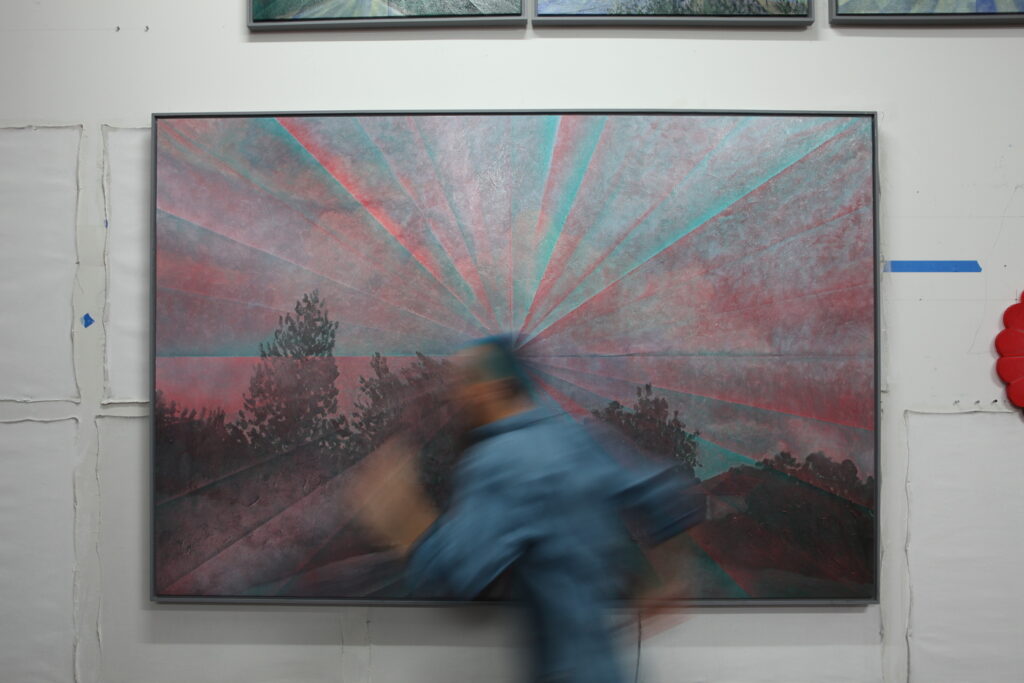
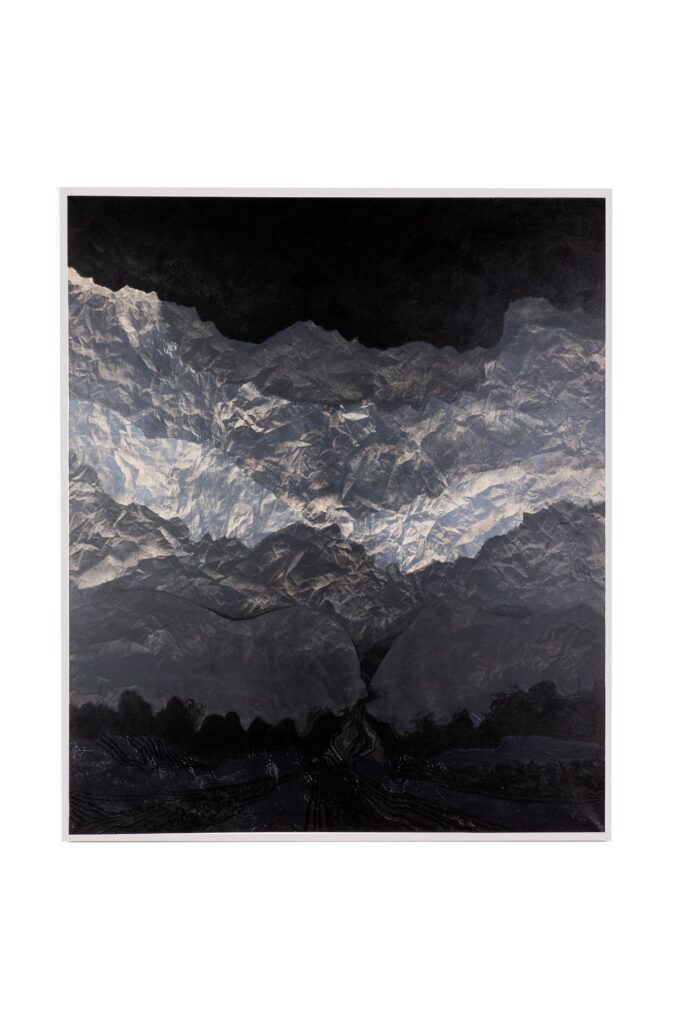
His sense of centered radial geometry and his use of religious imagery bring ikons to mind when studying his work. The fervor of the stories he tells – of flaming comets and surging seas and roiling mountains – gives his work overall a sense of the foundational texts of a religion both primitive and post-modern.
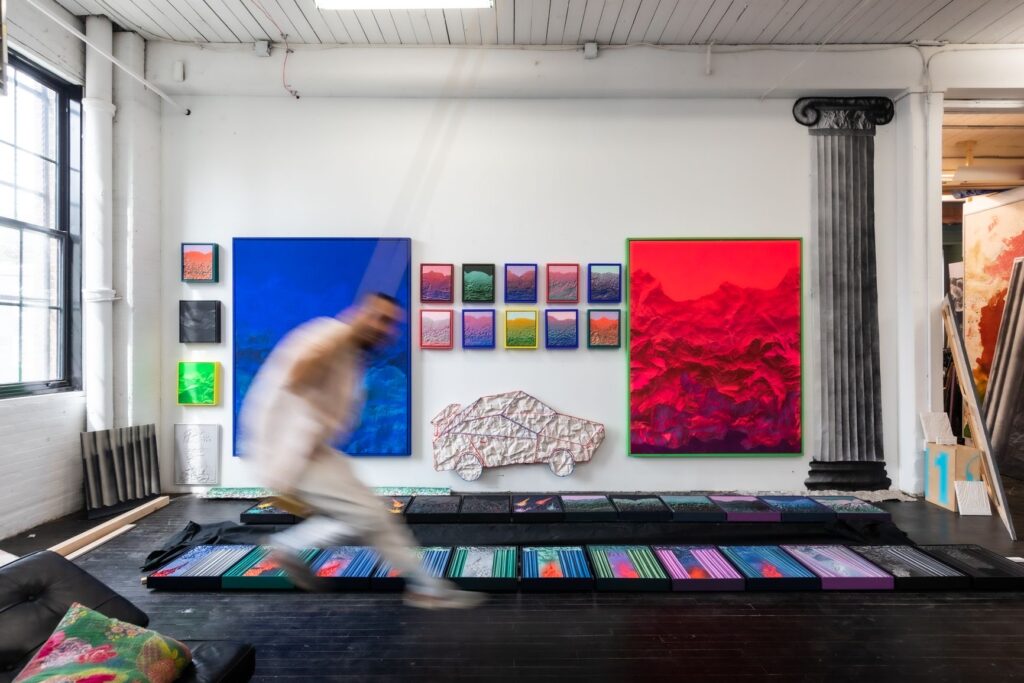
Daniel Maidman: You attended the Art Academy of Kosovo. What was art school like for you? Does your current work represent an extension of what you began there, or a break from it – and if it’s a break from it, what was your process of setting aside your training in order to follow your own path?
Pajtim Osmanaj: It was a really fun time, some work and lots of hanging around. I think that the art school was very important to keep the work in the direction of becoming a painter. My work from then doesn’t look anything like the work I do now but the method of trying to discover or trying new things is still kind of the same, just much more complex now. I believe my training there is still part of my practice but in a different shape.
DM: You use an unusual and self-created set of media and techniques. Can you explain a little bit about them and how they came about?
PO: I always saw myself as a painter, a very mixed media painter. I didn’t have a specific theme or technique, but was always trying new things, very passionate but also confused. In 2015, I was working construction at a site in New York. One of the days, the other workers and I had to spray paint some ceilings, so we had to protect the floors and other stuff from all the spray work we had to do. We put masks on and started working, there was lots of spray dust. From all the dust and paint drips, the drop cloths got super dirty.
Usually we would throw them in the garbage. I was asked to clean up at the end of the day and on that process I was paying attention to these canvases – the drop cloths – and I was amazed by how an event like this created some of the most amazing paintings I have seen. I took them home, left them to dry, and later I continued to add some oil colors and signed them with my name.
At that time I was living in the Bronx and my living room was my studio. I started trying to kind of re-create that idea. Since the space was small, I wasn’t able to do the work through the paint dust as it happened in construction; it involved more direct spray painting on canvas and on that process I was creating sharper and smaller wrinkles.
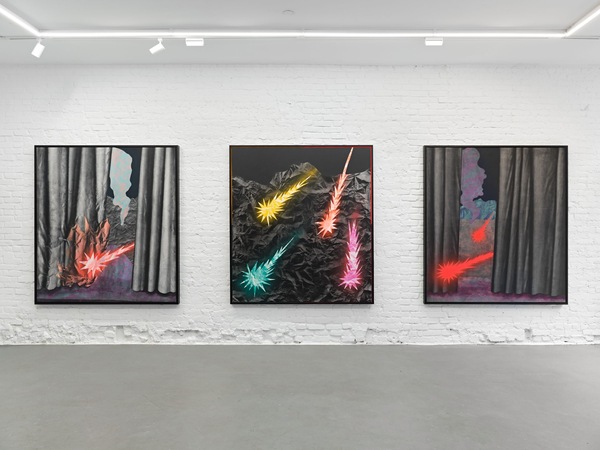
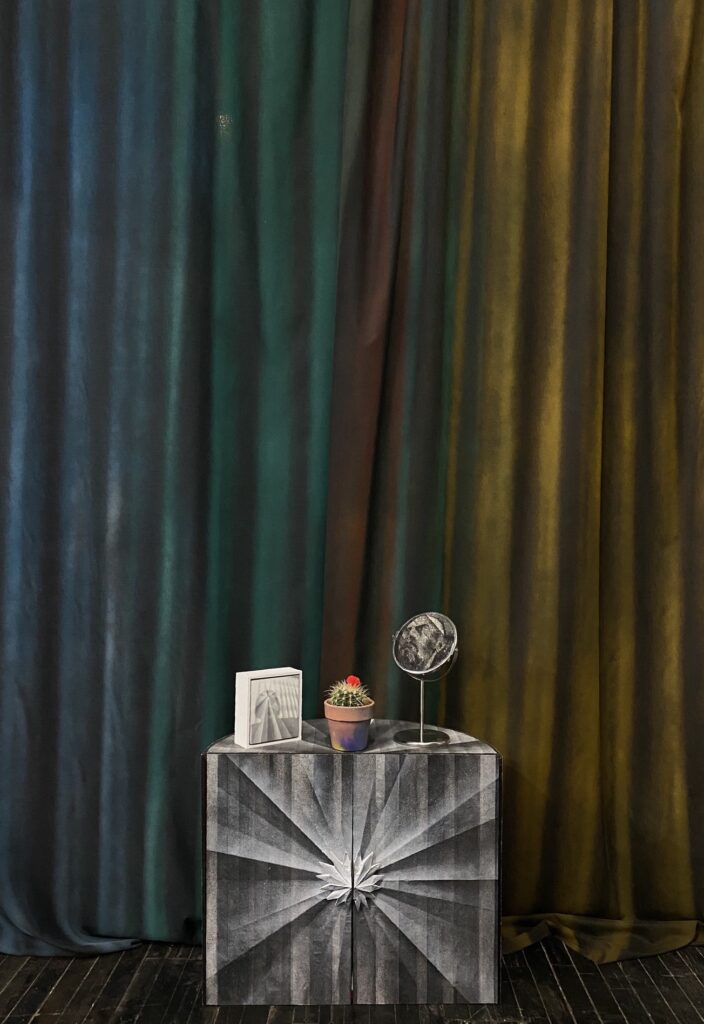
DM: To what extent do your techniques trigger accidental passages? You appear to compose with an image in mind, but also to embrace the opportunities your media afford. What is the relation in your work between intention and accident?
PO: “I think that every technique was an accidental passage sometime in the past and different artists got to master it and now we know all about it and is isn’t accidental anymore. What started as accidental becomes personal and known to us and later on shapes our personality as well.
Being open to those moments, those accidents start to become familiar to me and deeply part of my process. I have thought a lot about what can happen if we are always open to the newer appearance through an accident, where do we end up? And the only way to get an answer is to keep working and the process will show the way. That’s what I liked about these new paintings. The surprise was always part of the work and it kept me excited working and evolving in it.”
DM: How has immigrating to America affected your outlook as an artist?
PO: “I don’t know how to be specific about this but I know that living for ten years now in America has given me a totally different concept and outlook as a person/artist.”
DM: Do you have a community of artist friends with whom you discuss work and ideas? How do your colleagues, both personal friends and the broader art world, affect your work?
PO: “Artists make artists! Most of the learning that I can remember comes from hanging out and sharing ideas with my friends/colleagues and is still very important and valuable. It’s rare that art or any other life form exists on its own.”
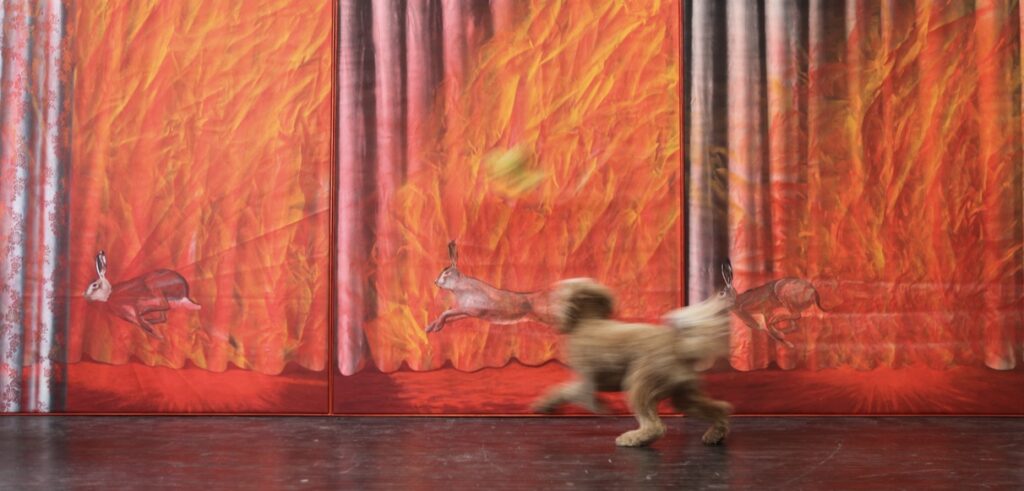
DM: Do you have any ideas where your art is going next? What’s exciting you lately?
PO: “I’m not sure at the moment, it could be anywhere or nowhere at the same time. Some work is still at the beginning of series and through the process it will become more clear where they belong. And that’s something very exciting to me, where there is no specific place for the work to go because that’s the ultimate freedom in work.”
Daniel Maidman is best known for his vivid depiction of the figure. Maidman’s drawings
and paintings are included in the permanent collections of the Library of Congress, the
New Britain Museum of American Art, the Wausau Museum of Contemporary Art, the
Long Beach Museum of Art, the Bozeman Art Museum, and the Marietta Cobb Museum
of Art. His work is included in numerous private collections, including those of Brooke
Shields, China Miéville, and Jerry Saltz. His art and writing on art have been featured in
The Huffington Post, Poets/Artists, ARTnews, Forbes, W, and many others.

